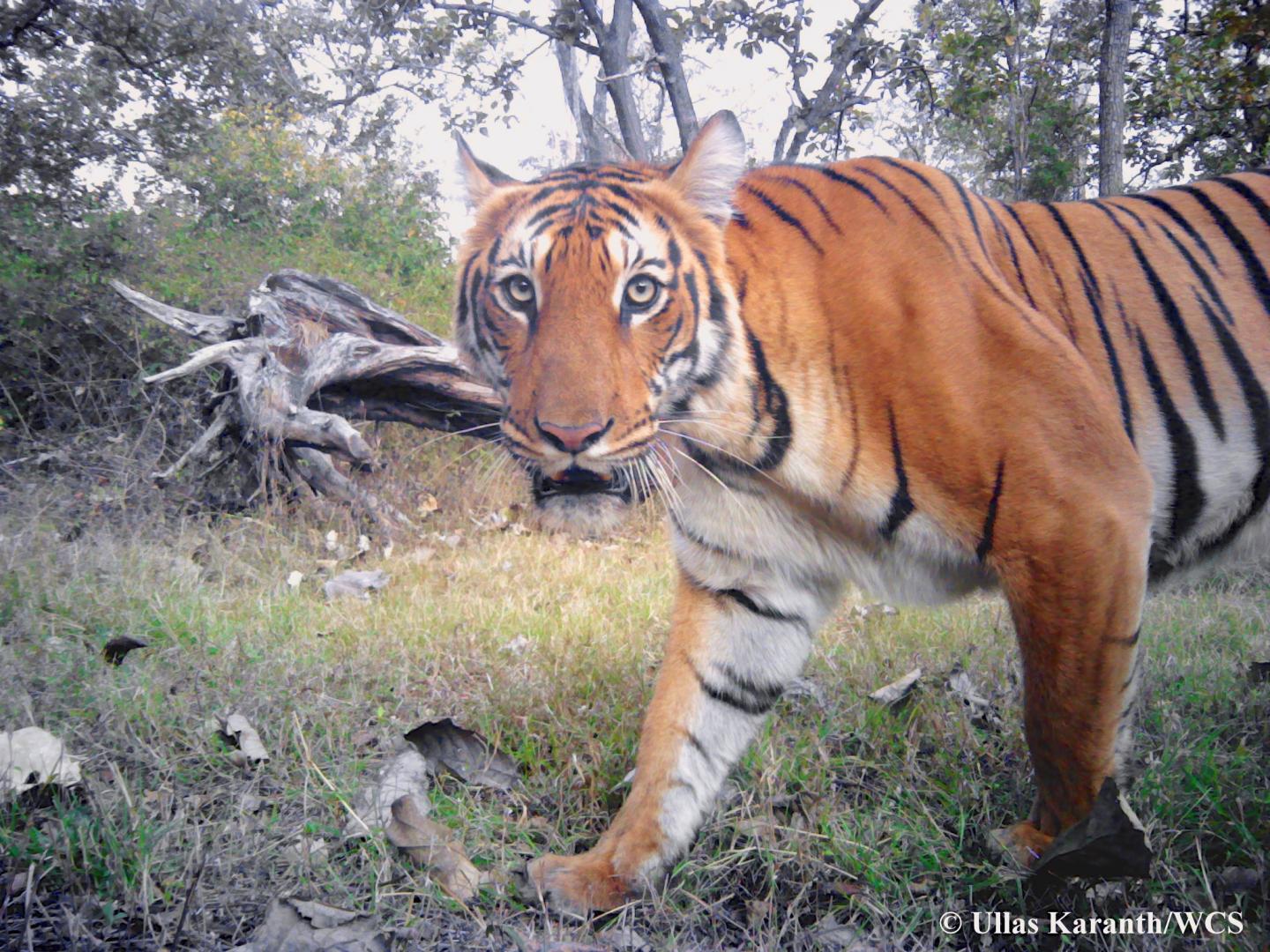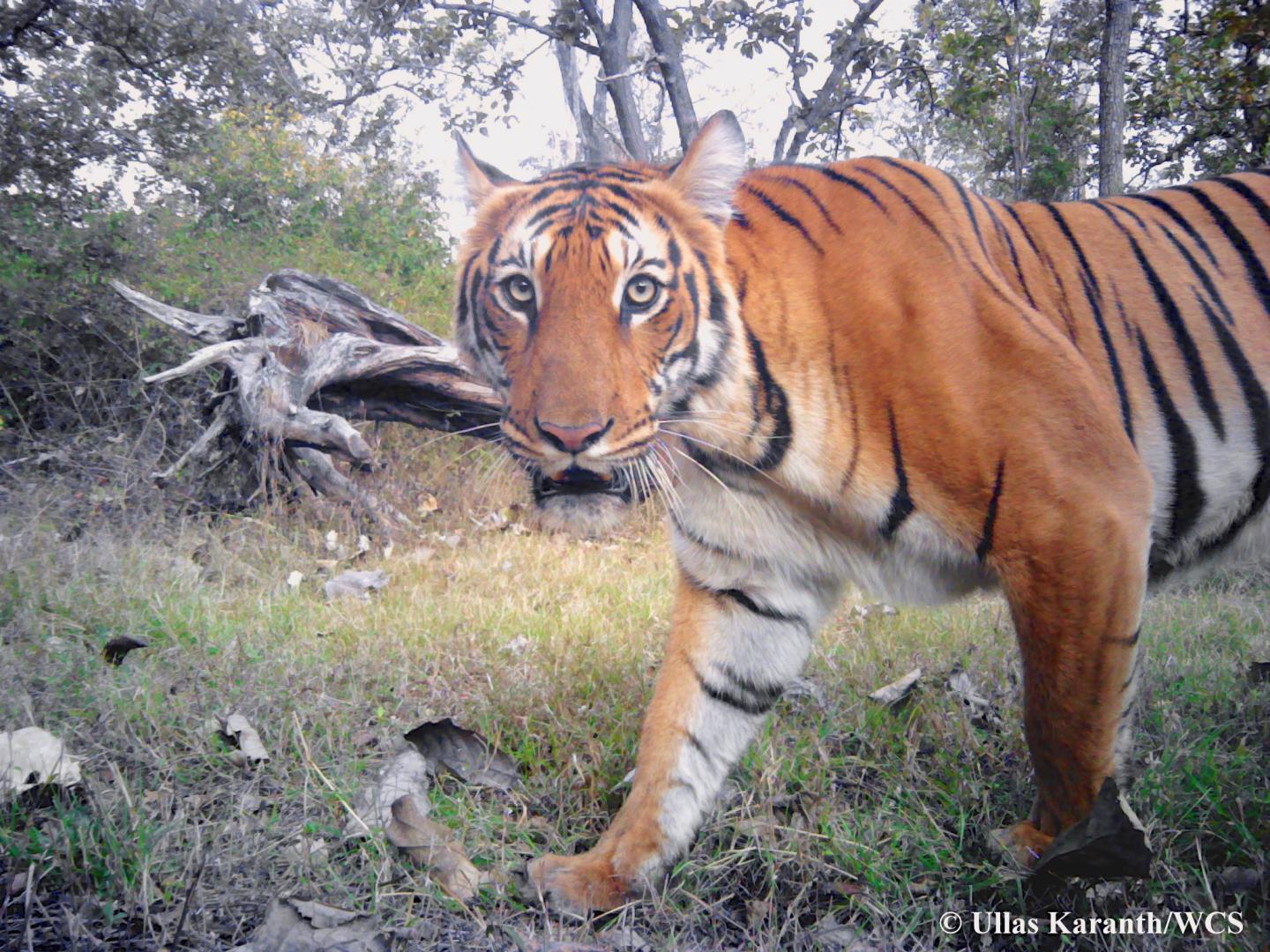
Credit: Ullas Karanth / WCS
(Bangalore, India (03/29/17) – A new methodology developed by the Indian Statistical Institute, and WCS (Wildlife Conservation Society) may revolutionize how to count tigers and other big cats over large landscapes.
The new method offers the opportunity for researchers to rigorously assess animal numbers at large geographical scales–a critical need for informing conservation interventions and wildlife management.
Called "Bayesian Smoothing Model (BSM)," the methodology addresses a thorny problem faced by ecologists and conservationists: extrapolating accurate population counts in smaller areas, such as protected reserves, to wider regions where only weaker methods can be employed.
Currently, scientists rely on information collected using rigorous but resource-intensive survey methods-such as camera trapping- to provide reliable results at smaller scales. However, they are compelled to use weak surrogate indices, such as track counts, while surveying large landscapes of 10,000 square kilometers or more. The current statistical method of integrating these two types of data, known as Index-Calibration, developed decades ago, which is known to generate misleading population estimates.
BSM addresses this critical flaw by developing a far more complex but realistic model for combining information obtained at different geographical scales.
The authors illustrated the BSM technique by applying it to the information from actual data sets from WCS tiger surveys in India. These data included tiger abundance derived from camera surveys and habitat occupancy estimated from counts of tiger signs such as tracks. They found model results to be in conformity with tiger numbers expected based on WCS ecological studies going back three decades.
In addition, the new method confirmed scientists' earlier critiques of the traditional "index-calibration" tiger survey method.
"BSM offered a superior, more rigorous methodology to combine these two types of data to yield more transparent, reliable estimates," said Prof. Mohan Delampady at the Indian Statistical Institute, Bangalore, who guided the development of the new method. "This also opens the door wide for development of even better methods in the future."
"We are delighted to help advance the science of monitoring tigers and other endangered species. The progress on scientific techniques we describe can significantly impact and greatly inform how we direct our efforts in saving these iconic species into the future," said Dr. Ullas Karanth, WCS Director for Science in Asia.
###
The authors note that their general approach is potentially applicable to a wide range of other species (e.g. large herbivores) whose abundance and distributions are surveyed using different methods, and, in other fields where there exists a similar need to integrate heterogeneous data from different geographic scales.
This work was supported by the Liz Claiborne and Art Ortenberg Foundation, the Satter Foundation, the United States Fish and Wildlife Service and the Indian Statistical Institute.
The paper, "Bayesian Methods for Estimating Animal Abundance at Large Spatial Scales Using Data from Multiple Sources," (DOI: 10.1007/s13253-017-0276-7) appears currently in the Journal of Agricultural, Biological, and Environmental Statistics. Authors of the paper are: Soumen Dey and Mohan Delampady of the Indian Statistical Institute; Ravishankar Parameshwaran and N. Samba Kumar of Centre for Wildlife Studies and WCS-India; Arjun Srivathsa of Centre for Wildlife Studies, WCS-India, and University of Florida; and K. Ullas Karanth of WCS, Centre for Wildlife Studies, and Tata Institute of Fundamental Research-NCBS.
Media Contact
Scott Smith
[email protected]
718-220-3698
@TheWCS
http://www.wcs.org





